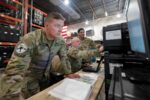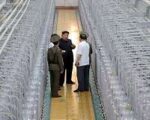Three of Europe’s largest defense contractors—Airbus Defence and Space (Germany/France), Leonardo (Italy), and Thales Alenia Space (France/Italy)—have agreed to merge their space businesses into a new joint venture valued at €6.5 billion. The move aims to consolidate Europe’s fragmented military space sector and enhance its competitiveness against U.S. and Chinese defense primes in critical domains such as secure communications satellites, Earth observation (EO), and command-and-control (C2) infrastructure.
Strategic Rationale Behind the Merger
The newly announced merger is driven by strategic imperatives across both commercial and military domains. With increasing demand for sovereign satellite capabilities—especially in the wake of Russia’s war on Ukraine and growing tensions in the Indo-Pacific—the three companies aim to pool resources to accelerate innovation cycles while reducing duplication.
According to a joint statement released on October 15th, 2025, the new entity will bring together Airbus’ satellite manufacturing expertise (including its work on Eurostar Neo platforms), Thales Alenia’s strong EO/IR satellite portfolio (such as COSMO-SkyMed), and Leonardo’s growing electronics payloads business under one roof. The goal is to create a vertically integrated “European Space Champion” capable of competing with Lockheed Martin Space Systems, Northrop Grumman Innovation Systems, Maxar Technologies, and China Aerospace Science and Technology Corporation (CASC).
This consolidation mirrors similar moves in other sectors—such as MBDA in missiles or KNDS in land systems—and reflects broader EU ambitions for strategic autonomy in defense technologies.
Ownership Structure and Governance
The joint venture will be structured as follows:
- Airbus Defence & Space: 45% stake
- Thales Alenia Space: 35% stake
- Leonardo S.p.A.: 20% stake
The headquarters will be based in Toulouse, France—a symbolic nod to Airbus’ industrial base—with operational centers retained across Italy (Rome/Turin), Germany (Ottobrunn/Friedrichshafen), Spain (Madrid), and Belgium.
A rotating board structure will ensure equitable governance across the three firms. The CEO will initially be appointed by Airbus for a five-year term; subsequent leadership appointments will rotate among the partners.
Core Capabilities of the New Entity
The merged company is expected to focus on several high-priority capability areas:
- Secure Military Communications: Leveraging Airbus’ experience with Skynet-5/6 programs for the UK MoD and Syracuse IV for France.
- Synthetic Aperture Radar (SAR) & EO Satellites: Building upon COSMO-SkyMed Second Generation (CSG) from Thales Alenia/LuxSpace partnerships.
- C4ISR Integration: Developing resilient space-based command-and-control nodes interoperable with NATO Link-16/22 standards.
- Optical Payloads & Sensors: Utilizing Leonardo’s Optronics division for advanced imaging systems used in both ISR missions and missile guidance applications.
- Sovereign Launch Support: While not directly involved in launch vehicles like ArianeGroup or Vega-C programs, the JV will coordinate closely with ESA/EU launch initiatives.
Implications for European Defense Autonomy
This merger aligns closely with EU Commission goals under the European Defence Fund (EDF) and Permanent Structured Cooperation (PESCO). By consolidating capabilities under one industrial roof, it reduces intra-European competition while streamlining access to funding mechanisms tied to dual-use technologies such as satellite navigation (GNSS/Galileo), battlefield connectivity layers via LEO constellations, or AI-enhanced ISR analytics from orbit.
The move also strengthens Europe’s ability to field sovereign alternatives to U.S.-controlled systems like GPS or commercial providers like Starlink—particularly relevant after Ukraine’s experience with GNSS spoofing/jamming during conflict operations. A unified industrial actor can more effectively deliver hardened SATCOM solutions tailored for contested environments—a rising priority within NATO force planning documents post-2023 Vilnius Summit.
A Competitive Response to Global Rivals
The new JV is clearly designed as a counterweight not only to American primes but also China’s rapidly expanding state-backed space-industrial complex. CASC has launched dozens of dual-use satellites under its Yaogan series since 2020—many believed by Western analysts to support PLA Strategic Support Force missions involving ELINT/SIGINT collection over Indo-Pacific hotspots.
This consolidation gives Europe a stronger hand when bidding on global contracts—from Middle Eastern allies seeking sovereign EO capabilities to potential African Union partnerships around climate-security monitoring via SAR constellations. It also positions Europe better within NATO procurement pipelines that increasingly emphasize interoperability via standardized STANAG interfaces across airborne/satellite ISR assets.
Challenges Ahead: Bureaucracy vs Agility?
Despite its promise, skeptics warn that combining three legacy-heavy firms could lead to bureaucratic inertia rather than innovation acceleration. Previous efforts at pan-European integration—such as OCCAR-led programs like Eurodrone or MALE RPAS—have faced delays due to divergent national requirements or budgetary hesitations from member states.
The success of this merger may hinge on how effectively it can harmonize product roadmaps while maintaining agility against faster-moving U.S./Israeli startups entering the smallsat/microsat defense market with modular architectures. Moreover, workforce integration across different corporate cultures remains a non-trivial challenge given differing labor laws between France/Germany/Italy.
Outlook: What Comes Next?
The merger is expected to close by mid-2026 pending regulatory approvals from EU competition authorities and national security reviews by member states’ defense ministries. Early deliverables include an integrated roadmap for next-gen SATCOM constellations aligned with NATO’s Allied Future Surveillance program timelines (~2030).
If successful operationally—and politically—the JV could serve as a model template for future consolidations across other fragmented European MilTech sectors such as cyber defense platforms or autonomous underwater vehicles (AUVs).










